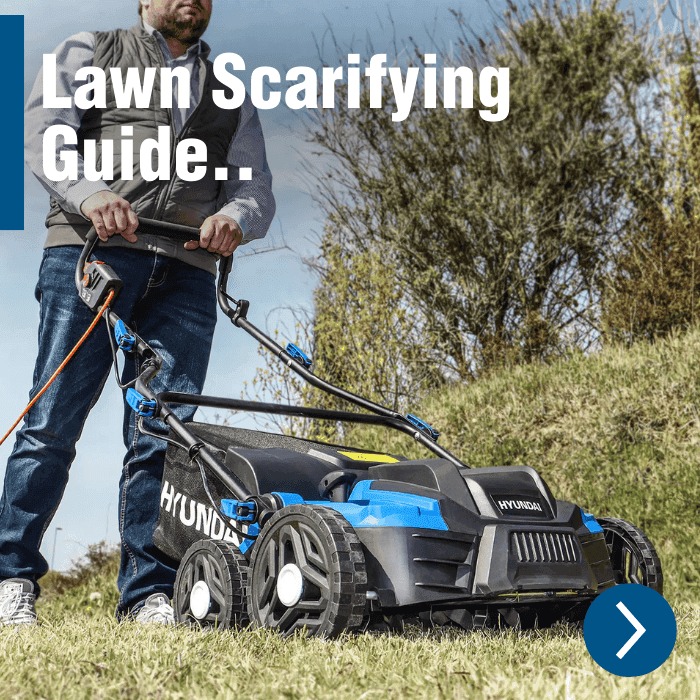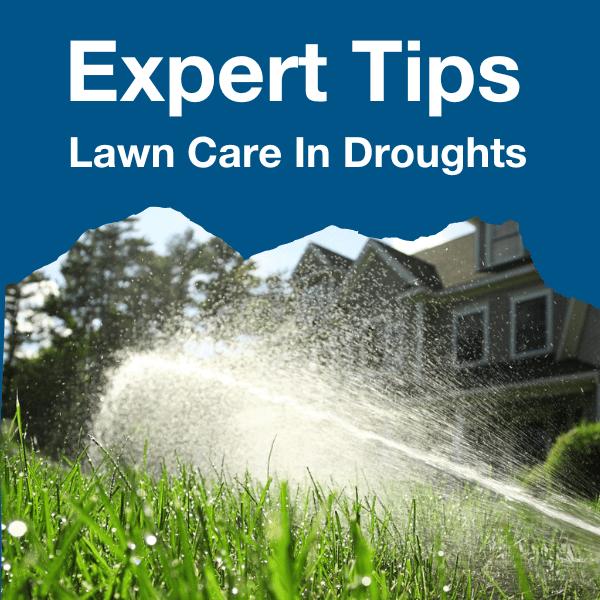A May Guide to Aeration Lawns in the UK
Posted by Hyundai Power Products on 5th May 2025
Breathe New Life into Your Lawn: A May Guide to Aeration in the UK
A lush, green lawn doesn’t happen by chance—it takes the right tools and timing. Lawn aeration is a proven method to boost your grass’s health by improving airflow, nutrient absorption, and root development.
Whether you're battling compaction, brown patches, or moss build-up, Hyundai’s range of lawn aerators makes it easy to revitalise your lawn.
Lawn Aeration vs. Scarifying – What's the Difference?
Knowing when and how to aerate or scarify your lawn can make a huge difference to your grass health. Here's a quick comparison of their purpose, how they work, and when to use each technique.
| Feature | Aerating | Scarifying |
|---|---|---|
| Purpose | Relieve soil compaction and improve nutrient and water penetration to grassroots. | Remove thatch, moss, and surface debris to allow air, water, and light to reach the soil. |
| How it Works | Hollow tine aerators: Remove plugs of soil (ideal for compacted lawns). Spike aerators: Create holes without removing soil. | Scarifiers use rotating blades or tines to cut into the surface and lift out thatch and moss. |
| Benefits |
|
|
| Best Time to Do It | Spring or autumn (ideally May in the UK). | Spring (April–May) or early autumn (September). For best results, pair with aeration. |
Why May is Ideal for Aeration in the UK
As the days grow longer and temperatures rise, May presents an opportune moment for UK homeowners to rejuvenate their lawns through aeration. This essential maintenance task enhances grass health, promotes robust growth, and prepares your lawn for the summer ahead.
May's mild temperatures and increased rainfall create optimal conditions for aeration. The soil is typically moist yet not waterlogged, making it easier to work with. Additionally, grass is in its active growth phase, ensuring quick recovery post-aeration.
Methods of Aeration
Hollow Tine Aeration:
This method removes plugs of soil, effectively reducing compaction and promoting better drainage. It's particularly beneficial for lawns with heavy clay soils.
Spike Aeration:
Involves driving spikes into the ground to create holes. While it doesn't remove soil, it's a quicker method suitable for minor compaction issues.
Manual Tools:
For smaller lawns, tools like garden forks or aeration sandals can be effective.
Tips for Effective May Aeration
Soil Moisture: Aerate when the soil is moist but not saturated. Aerating after light rain or watering the lawn the day before can make the process easier.
Mowing: Mow your lawn to a shorter height before aeration to allow better penetration and easier cleanup of soil plugs
Post-Aeration Care: Leave soil plugs on the lawn to decompose naturally, returning nutrients to the soil.
Fertilisation: Apply a suitable fertilizer after aeration to promote healthy growth.
Watering: Ensure the lawn receives adequate water in the weeks following aeration to support root development.
Common Mistakes to Avoid
Aerating Dry Soil: Attempting to aerate dry, hard soil can be ineffective and damaging to equipment. Ensure the soil is adequately moist
Over-Aeration: Excessive aeration can stress the lawn. For most UK lawns, once a year is sufficient.
Ignoring Lawn Conditions: Tailor your aeration method to your lawn's specific needs. For instance, heavy clay soils benefit more from hollow tine aeration.
Equip Yourself with the Right Tools
At Hyundai Power Products, we offer a range of lawn care equipment designed to make aeration and other maintenance tasks efficient and effective. Our petrol and electric lawn aerator are built to handle various lawn conditions, ensuring your grass remains healthy and vibrant throughout the year.
Hyundai offers a diverse range of lawn scarifiers and aerators, catering to various lawn sizes and user preferences.
Hyundai HYSC1532E – 1500W Electric Scarifier / Aerator (32cm)
Best for: Small to medium lawns
Power: 1500W electric motor
Working width: 32cm
Weight: 10.95kg
Grass collector: 30L
Features: 4 adjustable heights (-12mm to +4mm), lightweight design, 10m power cable
Ideal for: Budget-conscious users seeking a compact and efficient solution
Hyundai HYSC1600E – 1500W Electric Scarifier / Aerator (36cm)
Best for: Small to medium lawns
Power: 1600W electric motor
Working width: 36cm
Weight: 13.6kg
Grass collector: 45L
Features: 5 adjustable heights (-12mm to +6mm), foldable handles, 10m power cable
Ideal for: Users seeking a balance between performance and affordability
Hyundai HYSC1800E – 1800W Electric Scarifier / Aerator (38cm)
Best for: Medium-sized lawns
Power: 1800W electric motor
Working width: 38cm
Weight: 13.6kg
Grass collector: 45L
Features: 5 adjustable heights (-12mm to +10mm), robust wheels, 10m power cable
Ideal for: Users requiring more power for efficient lawn maintenance
Hyundai HYSC210 – 212cc Petrol Scarifier / Aerator (40cm)
Best for: Large lawns and professional use
Power: 212cc 4-stroke OHV petrol engine
Working width: 40cm
Weight: 37kg
Grass collector: 45L
Features: Stepless height adjustment (-15mm to +15mm), robust steel deck, transport position for blade protection
Ideal for: Users requiring powerful performance for extensive lawn areas
Compare Hyundai Lawn Aerators & Scarifiers
Choose the right aerator for your garden. Whether you need a lightweight electric model for a small lawn or a heavy-duty petrol aerator for professional use, Hyundai has the perfect solution to revitalise your grass.
| Model | Power Source | Working Width | Weight | Grass Collector | Height Adjustment | Best For |
|---|---|---|---|---|---|---|
| HYSC1532E | Electric (1500W) | 32cm | 10.95kg | 30L | 4 levels (-12mm to +4mm) | Small to medium lawns |
| HYSC1600E | Electric (1600W) | 36cm | 11.5kg | 45L | 5 levels (-12mm to +10mm) | Small to medium lawns |
| HYSC1800E | Electric (1800W) | 38cm | 13.6kg | 45L | 5 levels (-12mm to +10mm) | Medium-sized lawns |
| HYSC210 | Petrol (212cc) | 40cm | 37kg | 45L | Stepless (-15mm to +15mm) | Large lawns / professional use |
Lawn Aeration FAQs
What does a lawn aerator do?
A lawn aerator is a tool or machine designed to improve the health of your grass by perforating the soil with small holes. This process, known as aeration, allows air, water, and nutrients to penetrate deep into the grass roots. As a result, it promotes stronger root growth, reduces soil compaction, and enhances overall lawn vitality.
By breaking up thatch and loosening compacted soil, a lawn aerator helps your lawn absorb essential elements more efficiently. This leads to greener, thicker, and more resilient grass, especially in high-traffic areas or lawns with heavy clay soil.
When should I aerate my lawn in the UK?
In the UK, the best time to aerate your lawn depends on the type of grass and the condition of your soil. Generally, the ideal times are:
- Spring (March to May)
- Autumn (September to October)
Spring Lawn Aeration (March–May): Aerating in early spring helps relieve soil compaction caused by winter and prepares the lawn for strong summer growth.
Autumn Lawn Aeration (September–October): Autumn is often considered the best time to aerate in the UK. The soil is still warm, rainfall is more frequent, and grass is actively growing.
Is it better to spike or plug aerate a lawn?
When it comes to aerating your lawn, plug aeration (also known as core aeration) is generally more effective than spike aeration, especially for lawns with compacted soil or heavy clay.
Plug Aeration (Core Aeration):
- Removes small cores or plugs of soil from the ground
- Reduces soil compaction more thoroughly
- Allows air, water, and nutrients to penetrate deeply
- Encourages stronger root growth and long-term lawn health
- Best for: Highly compacted lawns, clay soil, and long-term lawn improvement
Spike Aeration:
- Uses solid tines or spikes to poke holes in the soil
- Can help with surface-level aeration
- Less effective at relieving compaction
- May compress the soil further around the holes
- Best for: Quick fixes, sandy soil, or light aeration between core treatments
What happens if you don't aerate your lawn?
If you don’t aerate your lawn, the soil can become compacted, restricting the flow of air, water, and nutrients to the grass roots. Over time, this leads to a range of common lawn problems that affect the health and appearance of your grass.
Consequences of Not Aerating Your Lawn:
- Soil Compaction
- Poor Drainage
- Thatch Buildup
- Weak Root System
- Thin, Patchy Grass
Why Lawn Aeration Matters:
- Deeper root growth
- Improved nutrient uptake
- Better water absorption
- Greener, thicker turf

 Expert Advice and Aftersales
Expert Advice and Aftersales Free UK Delivery*
Free UK Delivery*










